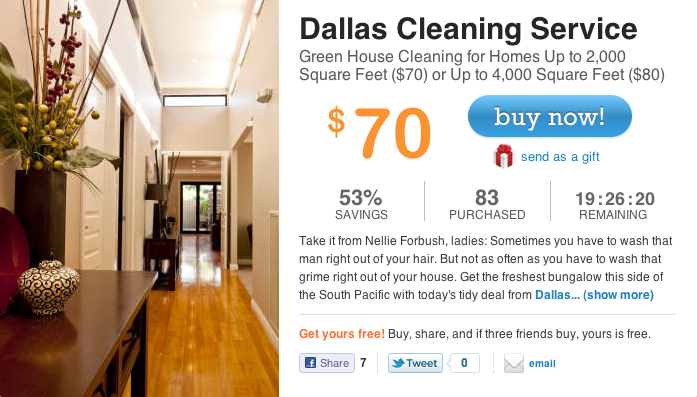The Anatomy of Viral Marketing
March 2011
By The Architect

Three deadly myths of viral marketing
“Viral” is a term that’s thrown around very loosely by marketers these days, which has muddled the true meaning of the term.
Here are three common misconceptions about viral marketing that will doom any campaign to failure from the start:
Myth #1: Viral marketing = Share buttons
Making content sharable is not the same as making it viral. Viral marketing is not as simple as adding social sharing badges to your website. Likewise, extending your content to social networking sites such as Facebook, Twitter and LinkedIn will not make it viral.
These are merely vehicles that make it easier for people to pass your content along to others in their network. There’s no guarantee that whatever is being shared will have life beyond the initial posting.
Myth #2: Viral = Video
“Viral” and “video” are uttered in the same breath so often that it seems as thought they are inextricably linked.
In fact, this is not the case at all. There’s nothing about videos that makes them inherently more viral than any other kind of content.
Viral videos may get a lot of hype, but in reality, any kind of content can go viral – a photo, an article, a fundraising campaign, even an entire website.
The potential of something to go viral has nothing to do with the medium and everything to do with the content and its ability to motivate a continuous chain of sharing.
Myth #3: Viral = 1,000,000 million hits
Going viral is not the web-equivalent of a record going platinum. There’s no arbitrary number that certifies something as having gone viral.
The primary goal of viral marketing should not be to achieve a pre-determined number of hits, views or retweets but to create something with nearly unlimited potential to resonate with people – whether on an emotional, pragmatic or ideological level – so that its reach exceeds ordinary expectations.
What is viral?
By definition, viral content is self-perpetuating and requires little or no additional investment in the act of moving it through the Web from one person to another.
To answer that question, forget marketing jargon and go back to biology class. What sets a virus apart from other organisms is that it has the ability to replicate itself when it finds the right environment variables.
The same quintessential elements apply to viral marketing. By definition, viral content is self-perpetuating and requires little or no additional investment in the act of moving it through the Web from one person to another. It is the very opposite of traditional advertising’s pay-to-play model, which demands greater spending to buy greater exposure.
The concept of viral marketing is nothing new, but it has exploded in the past decade because the mechanisms for sharing have evolved and expanded as social media has permeated the mainstream.
The original form of viral content was the e-mail forward. When someone found something entertaining, informative or self-defining, they’d paste it into an e-mail message and send it to everyone in their address book, and many of those recipients would likewise forward it along. Social sharing is today’s version of the e-mail forward.
On the surface, viral marketing seems easy because the most successful campaigns make it look that way. However, once you dig deeper into its anatomy, it becomes clear that there are a limited number of pathways through which a piece of web content can go viral.
It’s not enough for something just to be good. There’s too much good stuff on the Web for all of it to catch fire. If you want to create something that will grow and extend itself after you send it out into the world, it must harness one of three fundamental elements of self-perpetuating content: entertainment, a giveaway or self-definition.
The three channels of viral marketing
1. Entertainment
This category is probably what naturally springs to mind when you hear the word “viral.” However, this is actually the most difficult route to take and demands a level creative resources that are typically prohibitive for the average business.
With the hype surrounding high-profile viral marketing campaigns like Old Spice’s “The Man Your Man Could Smell Like,” it’s easy to oversimplify the formula for what it takes to pull this off. Everyone thinks their own stuff is entertaining, but in the eye of the beholder, this is rarely the case.
When you attempt to play in this space, you’re going up against the big guns who have immense resources to throw at superstar writers, artists, editors and producers. In the face of those odds, it’s very risky to hope that you’ll strike the magic combination of unique content and flawless execution to win the jackpot.
For every phenomenal success like Old Spice, there are plenty of embarrassing, high-dollar flops. And, yes, sometimes a kid with a webcam becomes an Internet sensation. But that’s like capturing lightning in a bottle. It’s nothing you can create artificially, and it's very difficult to cultivate organically.
2. The giveaway
In stark contrast to viral entertainment, the viral giveaway is potentially attainable by any business large or small, local or national.
There are two ways to approach this type of campaign, depending on the nature of your business:
If you deal in goods, you can give away free or discounted products to customers (think Groupon).
If you deal in services, you can give away time or expertise (or both).
In either case, there is heavy competition in the giveaway space, so it’s critical to ensure that there is significant perceived value in your offering, typically in terms of time or money saved for your customer.
But the giveaway is not viral in and of itself. What creates the mechanism for self-perpetuation is framing it as a reward received in exchange for participation in spreading your message.

This is something not all companies are prepared to do. The idea of creating something only to give it away seems ludicrous by conventional thinking.
However, you can’t look at the giveaway as a loss. The reality is that this is today’s marketing. Instead of pouring tens of thousands of dollars into carpet-bombing advertising that no one believes in, you’re investing in word of mouth – the most powerful form of trustcasting.

The act of giving away your valuable goods or expertise creates trust among your customers, who pass your message along to their friends and followers, who then spread it through their networks. Suddenly hundreds of new potential customers suddenly know who you are and what you do, with the added benefit of being recommended by someone they know and trust, and that trust is conveyed to you by association.
3. Self-definition
A product, an idea or a concept that is new, innovative, unique or just plain awesome is sharable.
But when it makes a bold statement – not about your company but about life, work or culture – that strikes a chord in the beholder, that’s when it has the potential to go viral.
When someone shares this type of content, they’re defining themselves through the act of sharing, attaching themselves to the history, the character or the lifestyle that exists around your brand. They’re identifying themselves as belonging to your tribe.
When Nike’s “Write the Future” debuted in May 2010, it set a new record for the most views of a viral video ad in its first week.
Its popularity was undoubtedly due in part to the celebrity appeal of the soccer superstars featured, but it also touches on a deeper love for the sport, for the World Cup and even for the feeling of connection with others inspired by a shared passion for a certain team or player. When someone shares this video with their friends, they’re attaching their identity to these broader concepts.
But you don’t have to be Nike to pull this off. If I post a link to your blog to my profile on LinkedIn, I’m defining myself as a torchbearer for your ideas. If I take a take a quiz on your website and tweet my score, I’m boasting about my intelligence. And if I make a donation to your nonprofit organization and share it on Facebook, I’m defining myself as an altruistic person who supports If your cause. In each case, my act of sharing challenges other like-minded people within my network to do the same, because they want to attach themselves to these ideas and qualities, too.
Execution
Viral marketing can’t be a one-off effort. You also can’t come up with an idea and tack on elements of viral marketing as an afterthought.
Viral marketing must permeate every aspect of your business model.
If you're going to play in this space, it must permeate every aspect of your business model, from your R&D process to your pricing structure to your marketing strategy. Your website and your presence on social media networks must be built to be part of the viral mechanism. You must focus on creating a self-perpetuating engine of traffic, conversion and sales.
To be successful, you must know your tribe and know it well. You must be realistic about what its members like and what they will respond to.
You must also be willing to take risks. Behind every successful viral campaign is trial and error, careful tracking of metrics and fine-tuning of the approach.
Are the risks worthwhile? In a word, yes. Today's most powerful business growth platforms are built on trustcasting and permission marketing. There’s no more direct route to owning your market than having a tribe of brand evangelists who carry your message for you, and viral marketing transforms the spark of word of mouth into an inferno that propels you ahead of your competition.
Behind every superstar website there is an architect, scrutinizing every single detail, cutting through the nonsense, and challenging every aspect to craft a masterpiece that gets noticed and gets results.